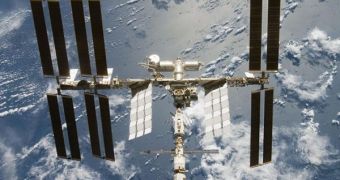Structural engineers at NASA are currently analyzing the oscillations the International Space Station (ISS) is subjected to, following a January 14th thruster firing, meant to adjust the structure's orbit in such a manner that it now fits the trajectories of the two shuttle missions that will dock on it later this month, or in early March. During the 22 second-long firing, the entire ISS was subjected to a higher-than-normal amount of vibrations, which had engineers concerned about the stability of the 10 year-old construction.
Yesterday morning, however, the team investigating the oscillations concluded that the readings weren't enough reason for concern, and cleared the structure to withstand another firing, originally scheduled for today. They said that the station's subsystems "have not shown any off-nominal results." And although NASA's mission controllers at the Johnson Space Center in Houston gave the go-ahead for the second firing, the Russian part of the mission canceled the order, saying that all the necessary modifications had already been made, and that the ISS was in the correct position to receive guests.
The next aircraft to dock on the space station will be the Russian cargo ship Progress 32, which will take the place of Progress 31 that will be jettisoned in space over the next days. The re-supply mission is scheduled to dock at the ISS on February 13th. On the 12th of February, NASA's Discovery shuttle will also take off to orbit, and will meet the station two days later. The purpose of the mission is to install the latest array of US solar panels on the structure, which will basically complete its power grid.
Because of the delay caused by the cancellation of the second engine firing, the Soyuz TMA-14 spacecraft, which was supposed to take off from Kazakhstan on March 25th, will now have to be launched one day later, in order to match it's course with that of the ISS. That mission carries the replacement crew for the space station, alongside space tourist Charles Simonyi.

 14 DAY TRIAL //
14 DAY TRIAL //